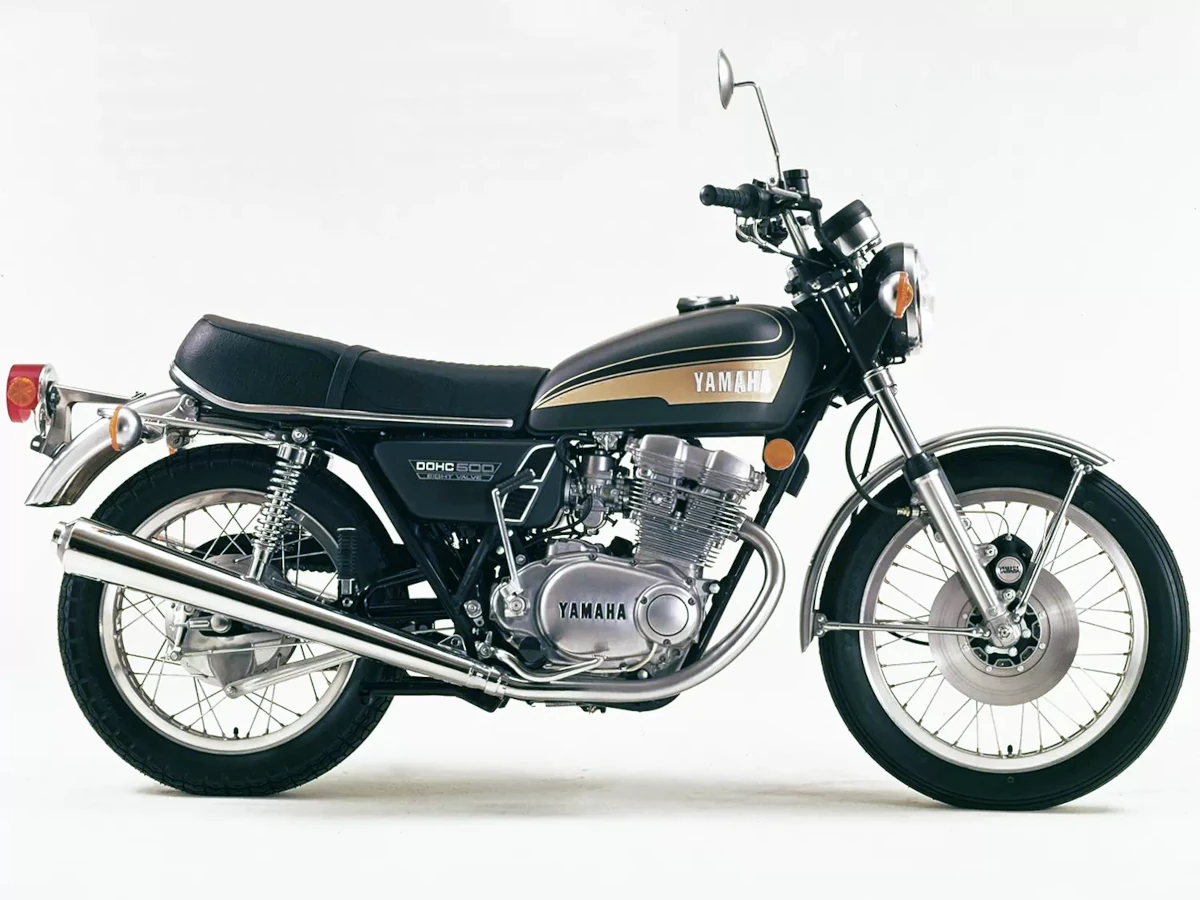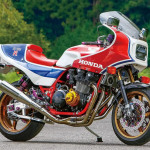The 3rd 4-stroke, 2-cylinder film is aimed at supersports!
In 1970, YAMAHA released the XS-1 with its first 4-stroke engine.
Recognizing the British big bikes as the pinnacle of big-bike performance, the company sought to catch up with and surpass them with the gentle appearance of a traditional vertical twin 650 cc model.

In 1972, the forward leaning twin TX750 was introduced as the pinnacle of luxury sports. However, the world's popularity was concentrated on the HONDA CB750 Fore, and the TX750 did not attract much attention along with the foreign models.
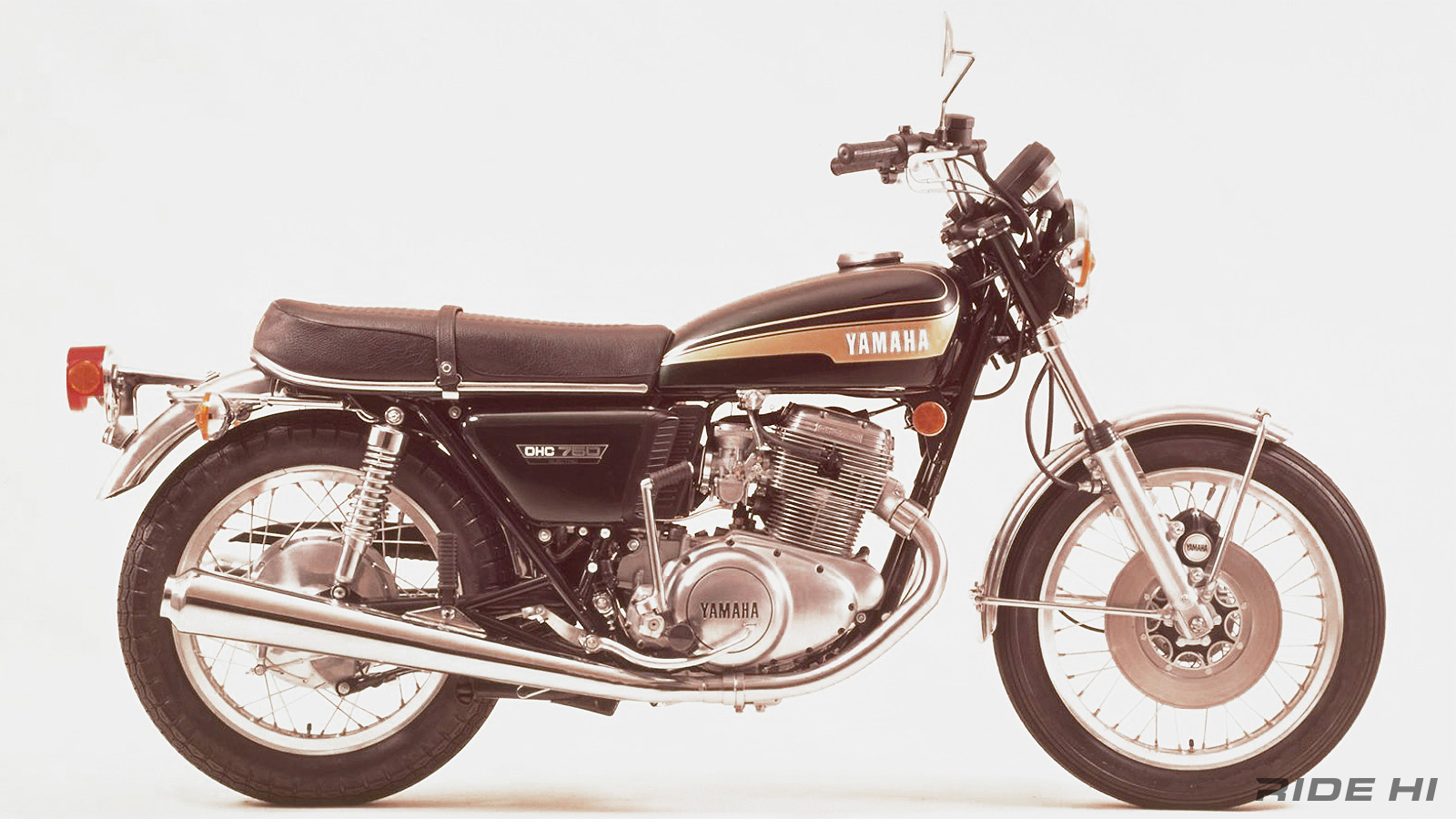
From the beginning, however, YAMAHA had planned three 2-cylinder models for its 4-stroke big bikes.
The TX500 debuted in 1973 as the youngest sibling.
At the time, in Europe and the U.S., the 500cc class was considered to be a super sports bike.
YAMAHA also wanted to challenge this momentum, and instead of the SOHC that had been used until then, it adopted DOHC, in which the intake and exhaust valves were each driven directly by a cam, and the combustion chamber had two intake valves and two exhaust valves, for a total of four valves per cylinder, for a head with eight valves in total. The crankshaft is 180°phased.
The crank was in 180°phase. The left and right pistons reciprocated alternately, which made the engine well-balanced and suitable for high rpm.
The TX500 debuted in 1973 as the youngest sibling.
At the time, in Europe and the U.S., the 500cc class was considered to be a super sports bike.
YAMAHA also wanted to challenge this momentum, and instead of the SOHC that had been used until then, it adopted DOHC, in which the intake and exhaust valves were each driven directly by a cam, and the combustion chamber had two intake valves and two exhaust valves, for a total of four valves per cylinder, for a head with eight valves in total. The crankshaft is 180°phased.
The crank was in 180°phase. The left and right pistons reciprocated alternately, which made the engine well-balanced and suitable for high rpm.
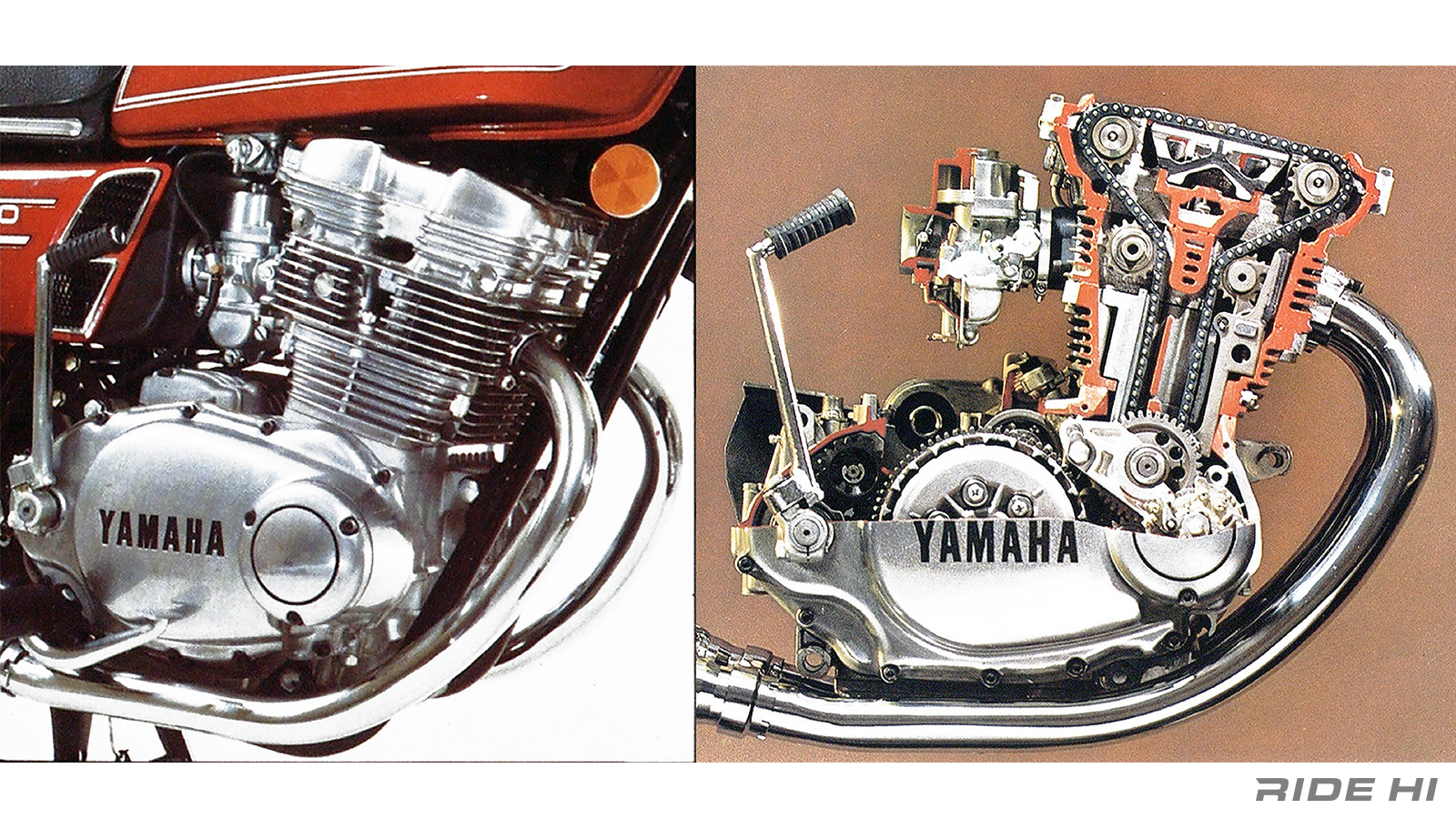
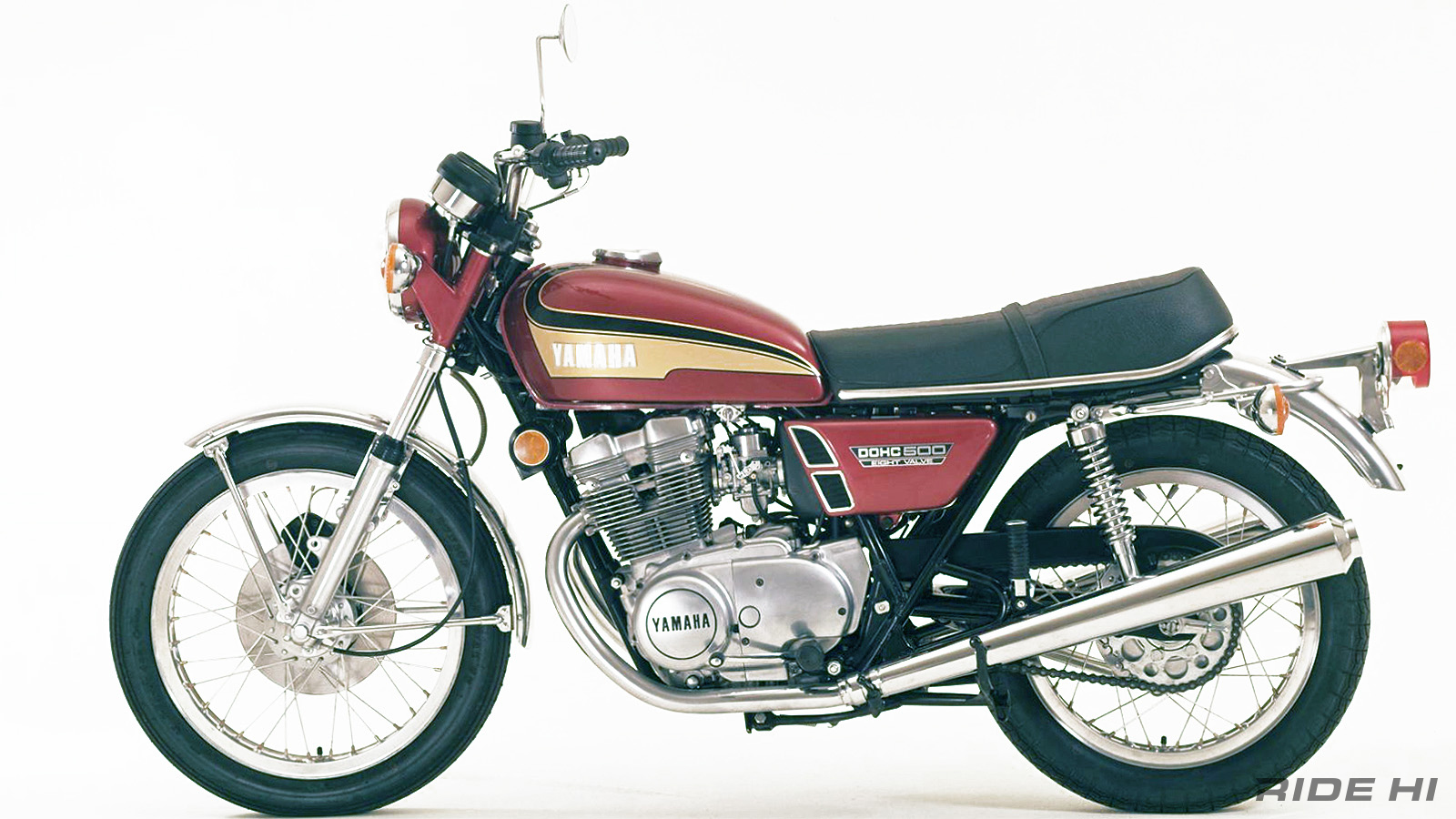
With a bore of 73 mm x stroke of 59.6 mm, the high-revving 498 cc engine's specifications of 48 PS at 8,500 rpm and 4.5 kgm at 6,500 rpm made one aware of its twin-like mid-range speeds, but its potential was sharp enough to swing through the 2-stroke 350 middle class by revving it up to 9,000 rpm. It had a sharp character that could outperform the 2-stroke 350 middle-class motorcycles.
However, with the popularity of the 750 class concentrated in Japan, and the Japanese driver's license system requiring a large-size driver's license for motorcycles over 400 cc, there was no one who wanted to buy a 500 cc class motorcycle.
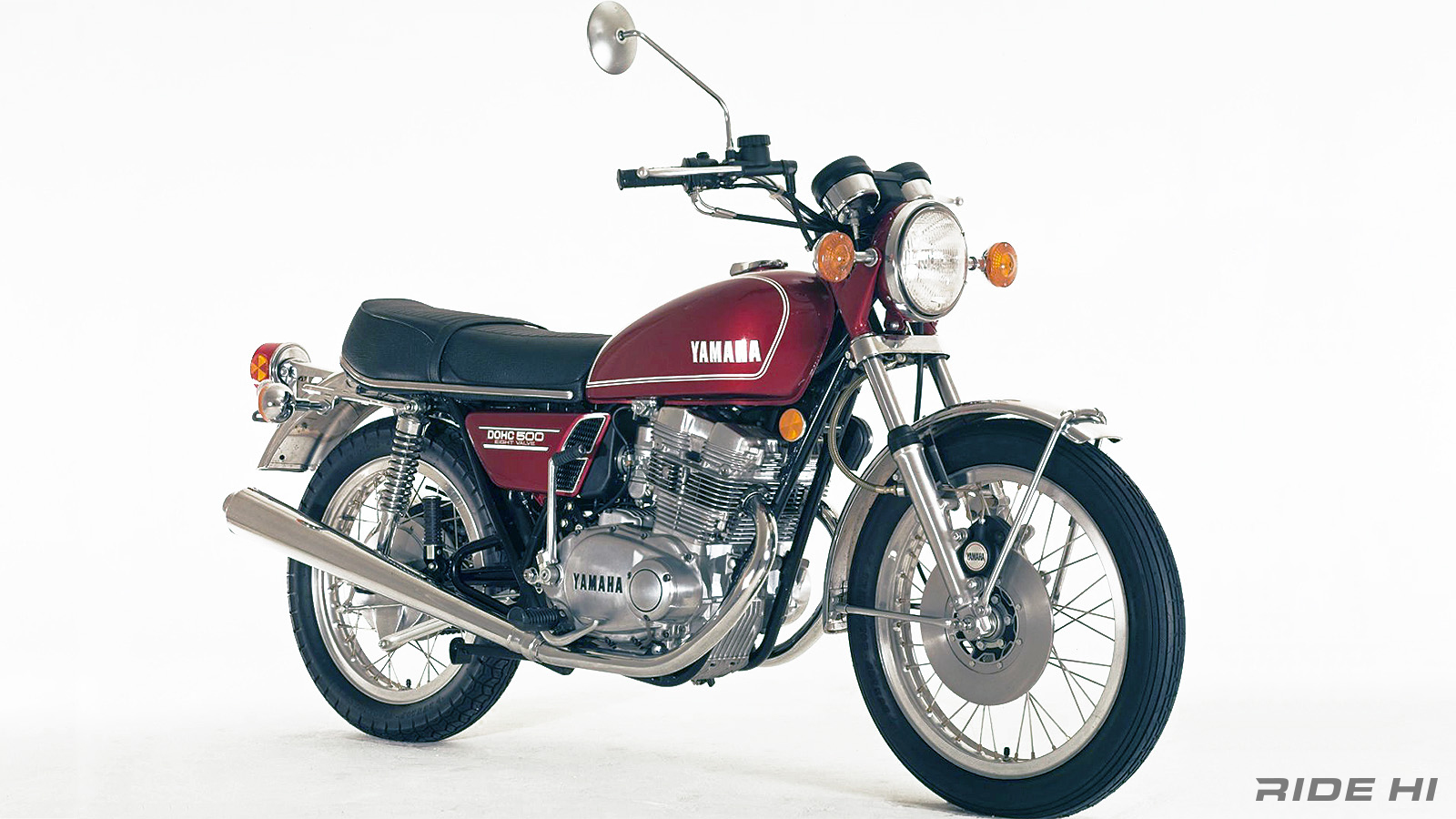
Because of this market situation, variations of the TX500 were added to the B-type and II models to make them more like big bikes, but they remained largely unseen in Japan.
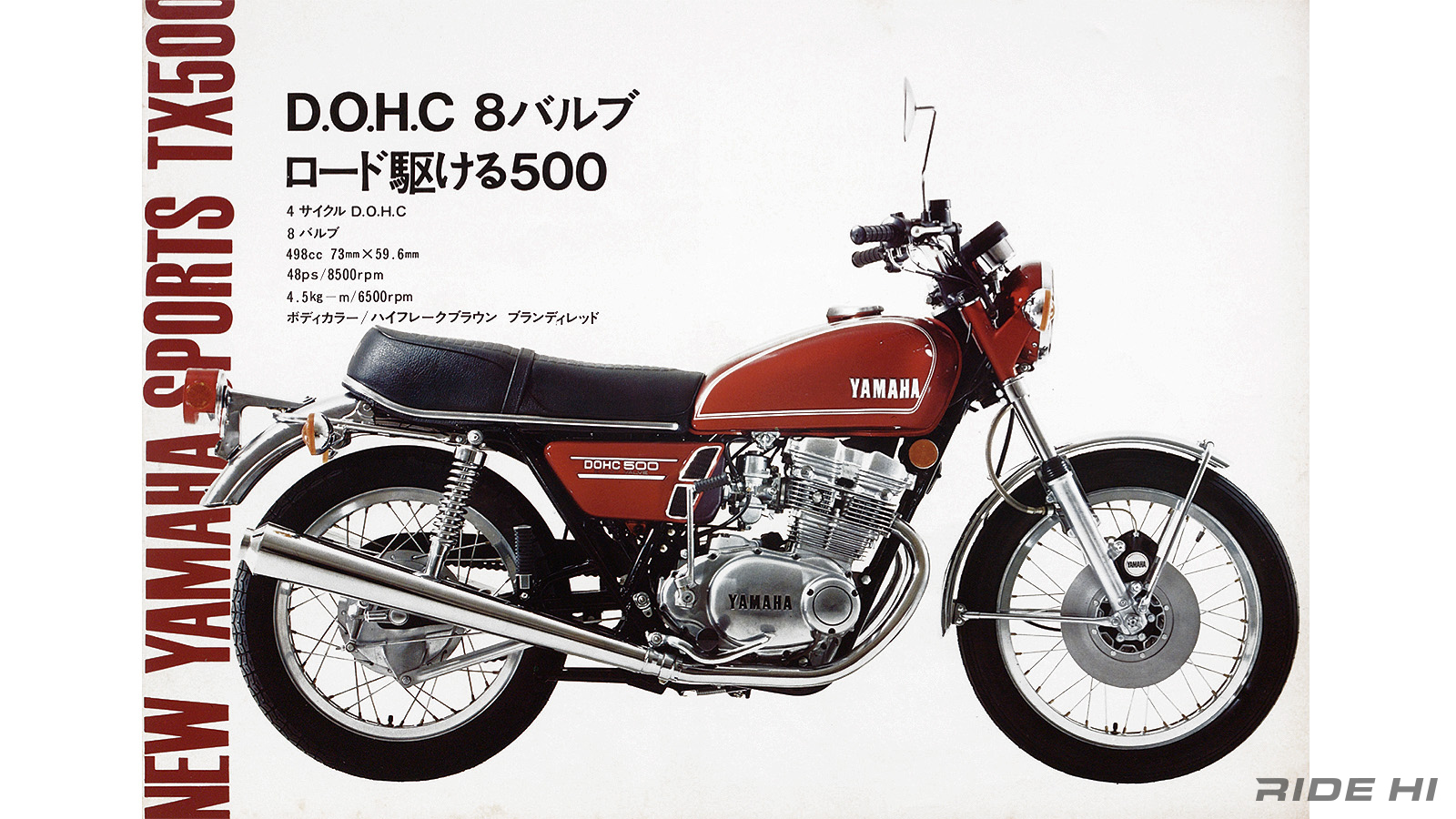
However, demand for the middle class is thriving overseas, and with the increase in the number of over 750cc models, the middle class is beginning to gain in value.
YAMAHA changed the design of the TX500 to a form more similar to the 400cc class, and switched the model name to XS500 or GX500, depending on the circumstances in the country of destination, to incorporate it into the series lineup.
Until the introduction of the XJ series four-cylinder models in 1980, the series remained popular among the younger generation.
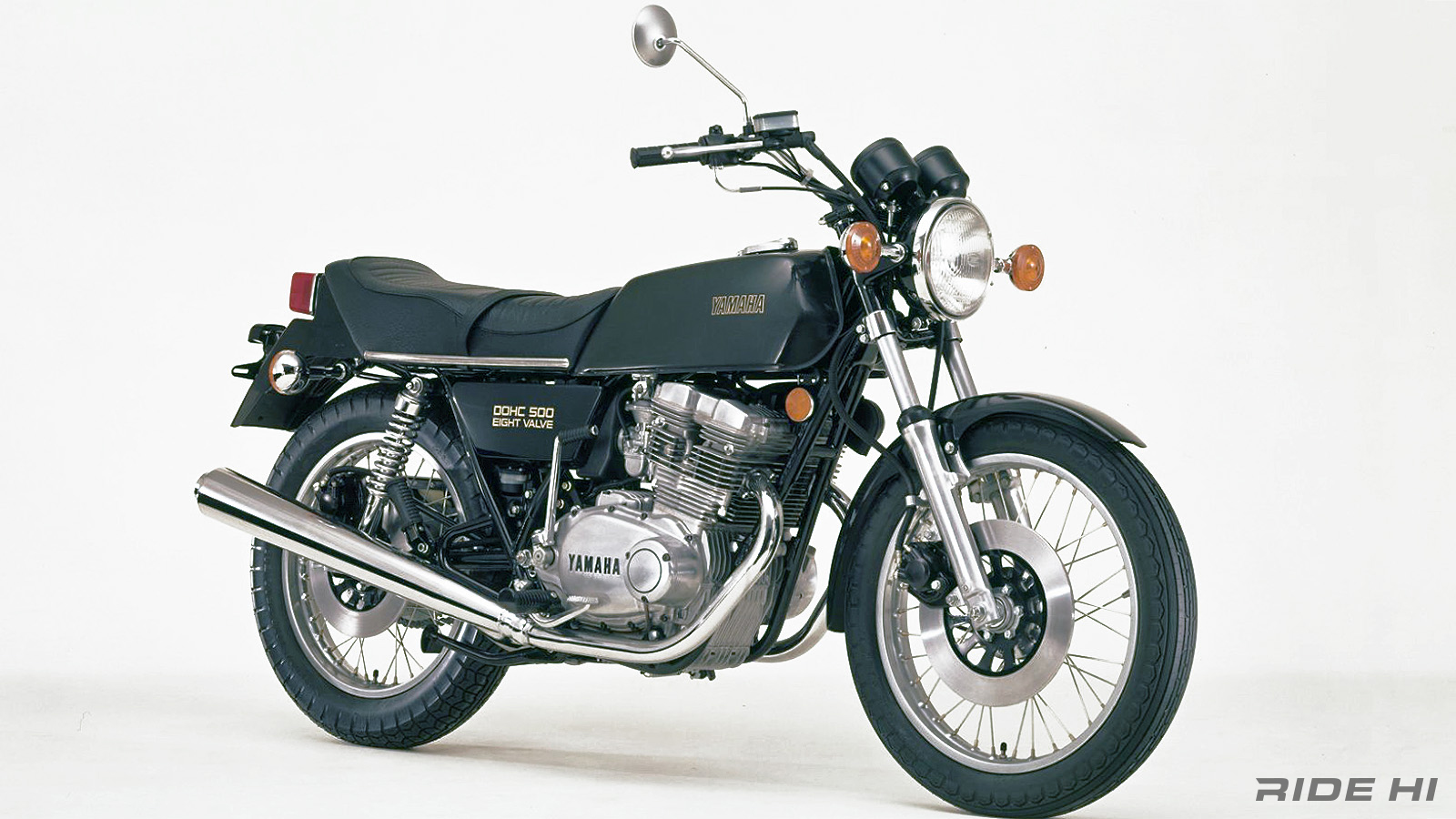
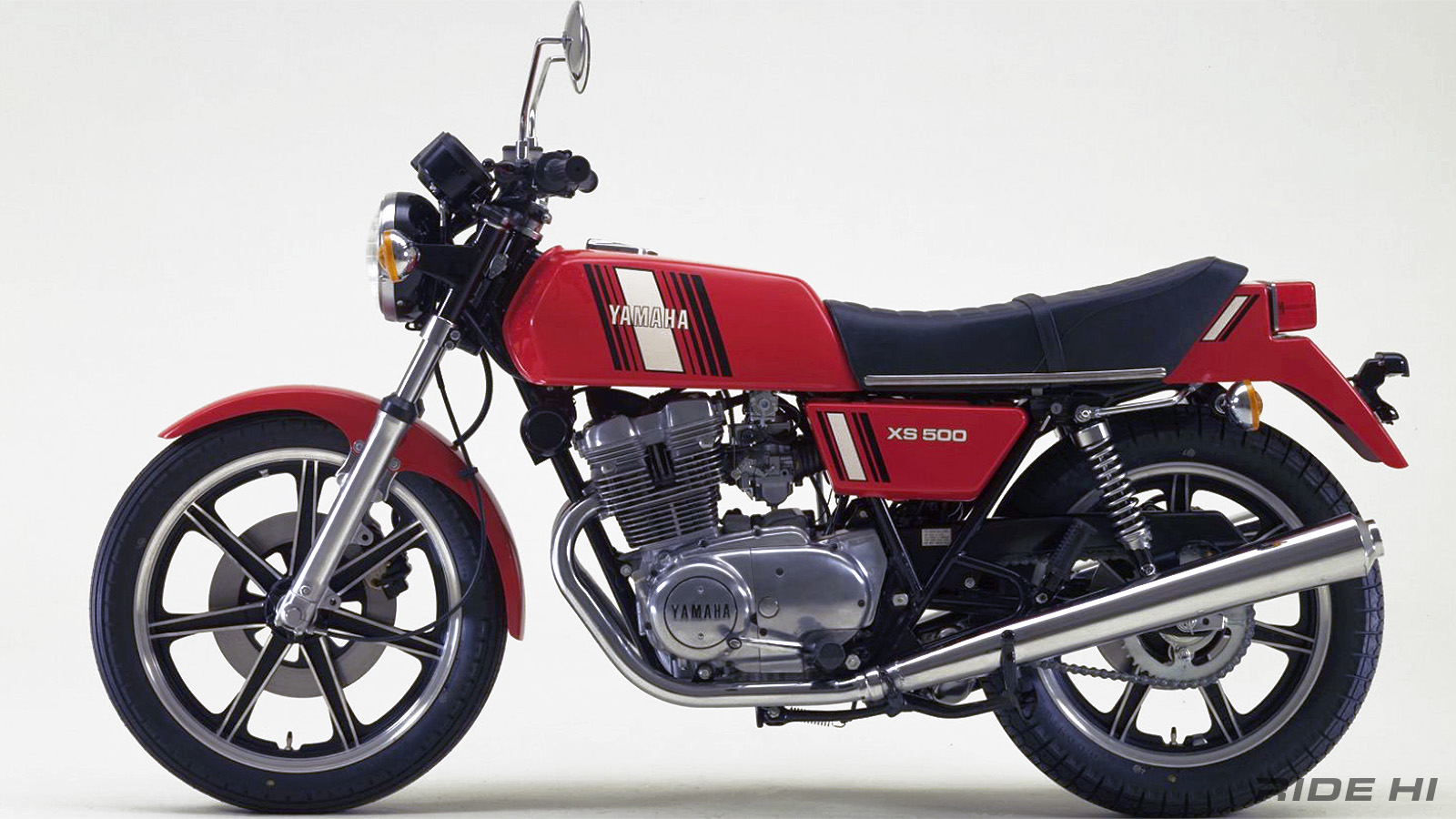
Still, the TX500 is an excellent fusion of middle-of-the-road sportiness and traditionalism that would make us wish now that it had a design that we would never get tired of.
In Japan, however, the culture of 400cc motorcycles was completely different from the rest of the world, with the 4-cylinder boom and the naked boom, and although a similar model, the XS360, existed at the time, it was an unpopular model that was far from mainstream.
In Japan, however, the culture of 400cc motorcycles was completely different from the rest of the world, with the 4-cylinder boom and the naked boom, and although a similar model, the XS360, existed at the time, it was an unpopular model that was far from mainstream.
Original Source [ RIDE HI ]
See YAMAHA Moto Index Page
See YAMAHA GX500 Parts & Accessories Page
See YAMAHA TX500 Parts & Accessories Page

